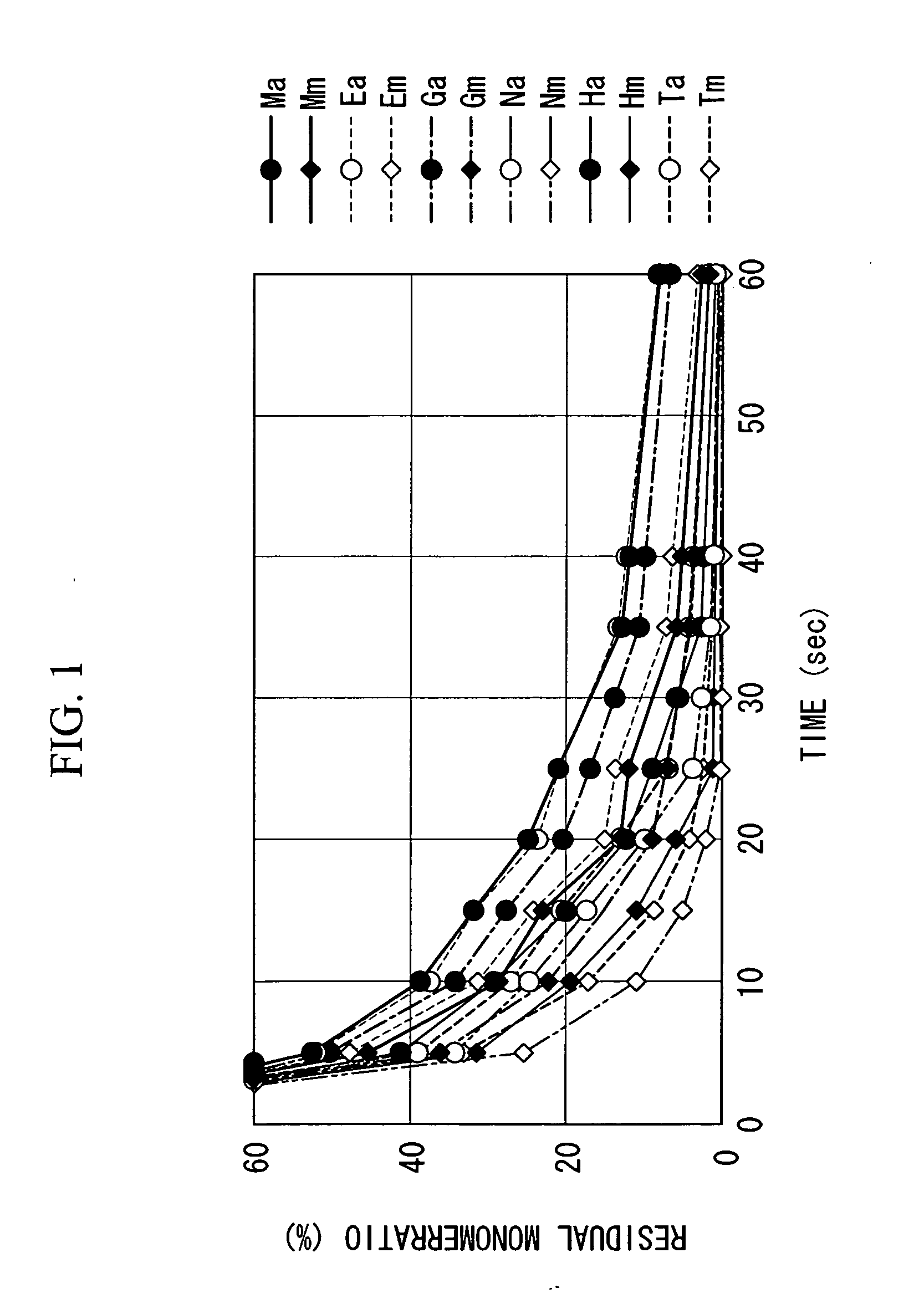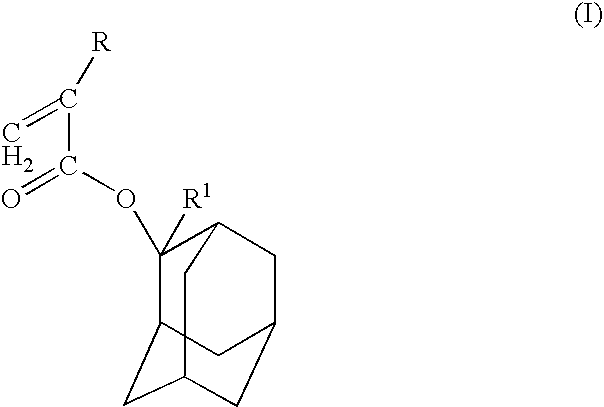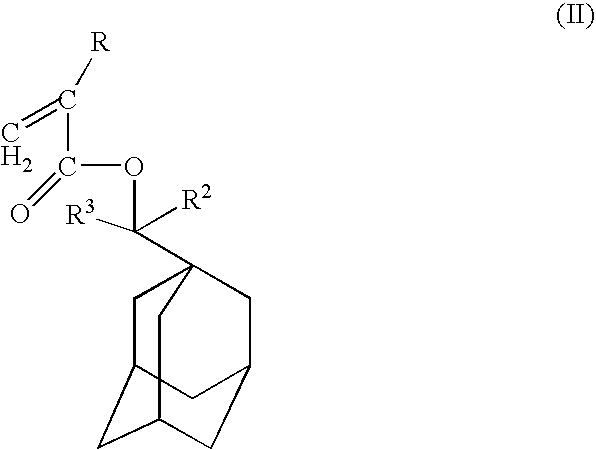Method of producing (meth) acrylic acid derivative polymer for resist
- Summary
- Abstract
- Description
- Claims
- Application Information
AI Technical Summary
Benefits of technology
Problems solved by technology
Method used
Image
Examples
reference example 1
[0099] Each of the monomers described below was used individually as the monomer.
[0100] The monomer was added to a reaction vessel containing tetrahydrofuran (THF), in sufficient quantity to generate a concentration of 30% by weight, and the monomer solution was stirred. Subsequently, the reaction vessel was heated until the internal temperature reached 60° C., and once 60° C. had been reached, a separately prepared THF solution of 2,2′-azobis(isobutyronitrile) (AIBN) was added to the monomer solution in a quantity equivalent to 10 mol % relative to the monomer, thereby starting the polymerization. Sampling was conducted at 5 minutes, 10 minutes, 15 minutes, 20 minutes, 25 minutes, 35 minutes and 60 minutes after the start of polymerization (the point where the polymerization initiator was added), and gas chromatography was used to determine the residual monomer ratio (%) in the system at each time, and these values were plotted on a graph. [0101] Ma: methyladamantyl acrylate [A co...
example 1
[0113] Referring to FIG. 1, a monomer mixture with a monomer composition of Em / Na / Ha=40 / 40 / 20 (molar ratio) was used, and by conducting polymerization under conditions including a polymerization solvent of THF, a monomer concentration of 30% by weight, a polymerization initiator of AIBN, a polymerization initiator concentration of 10 mol % relative to the combined monomers, an atmosphere of nitrogen, and a temperature of 60° C., a (meth)acrylic acid derivative polymer for use as a resist with a weight average molecular weight of 10,000 was obtained. Of the above monomers, Em is a methacrylate with an acid dissociable, dissolution inhibiting group, Na is an acrylate with a lactone unit, and Ha is an acrylate with a hydroxyl group, and from FIG. 1 it is evident that in terms of the residual monomer ratio 10 minutes after the start of polymerization, Em displays the highest value and Na displays the lowest value, and the difference between these two values is approximately 7%.
[0114] (...
PUM
 Login to View More
Login to View More Abstract
Description
Claims
Application Information
 Login to View More
Login to View More - R&D
- Intellectual Property
- Life Sciences
- Materials
- Tech Scout
- Unparalleled Data Quality
- Higher Quality Content
- 60% Fewer Hallucinations
Browse by: Latest US Patents, China's latest patents, Technical Efficacy Thesaurus, Application Domain, Technology Topic, Popular Technical Reports.
© 2025 PatSnap. All rights reserved.Legal|Privacy policy|Modern Slavery Act Transparency Statement|Sitemap|About US| Contact US: help@patsnap.com



